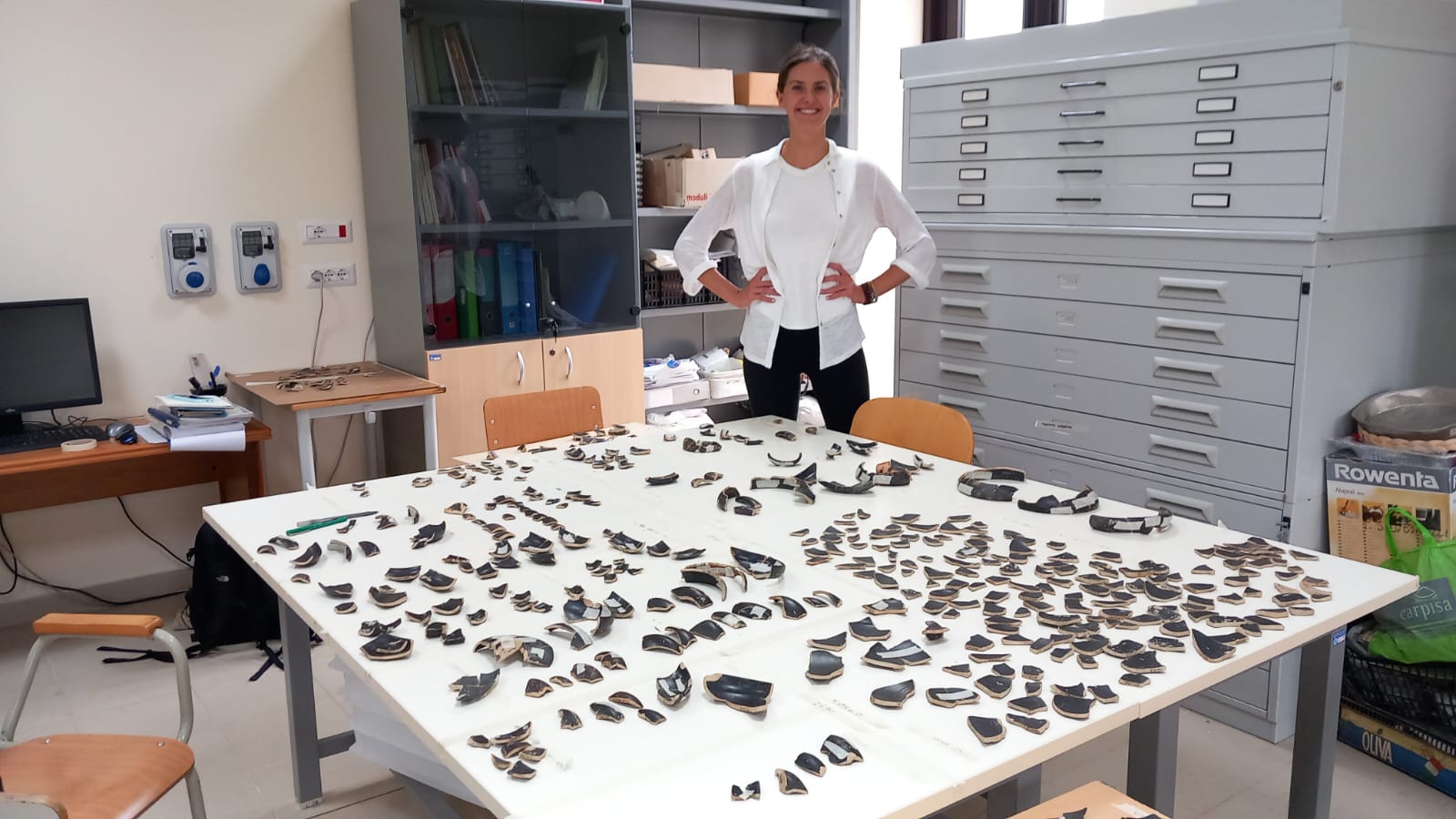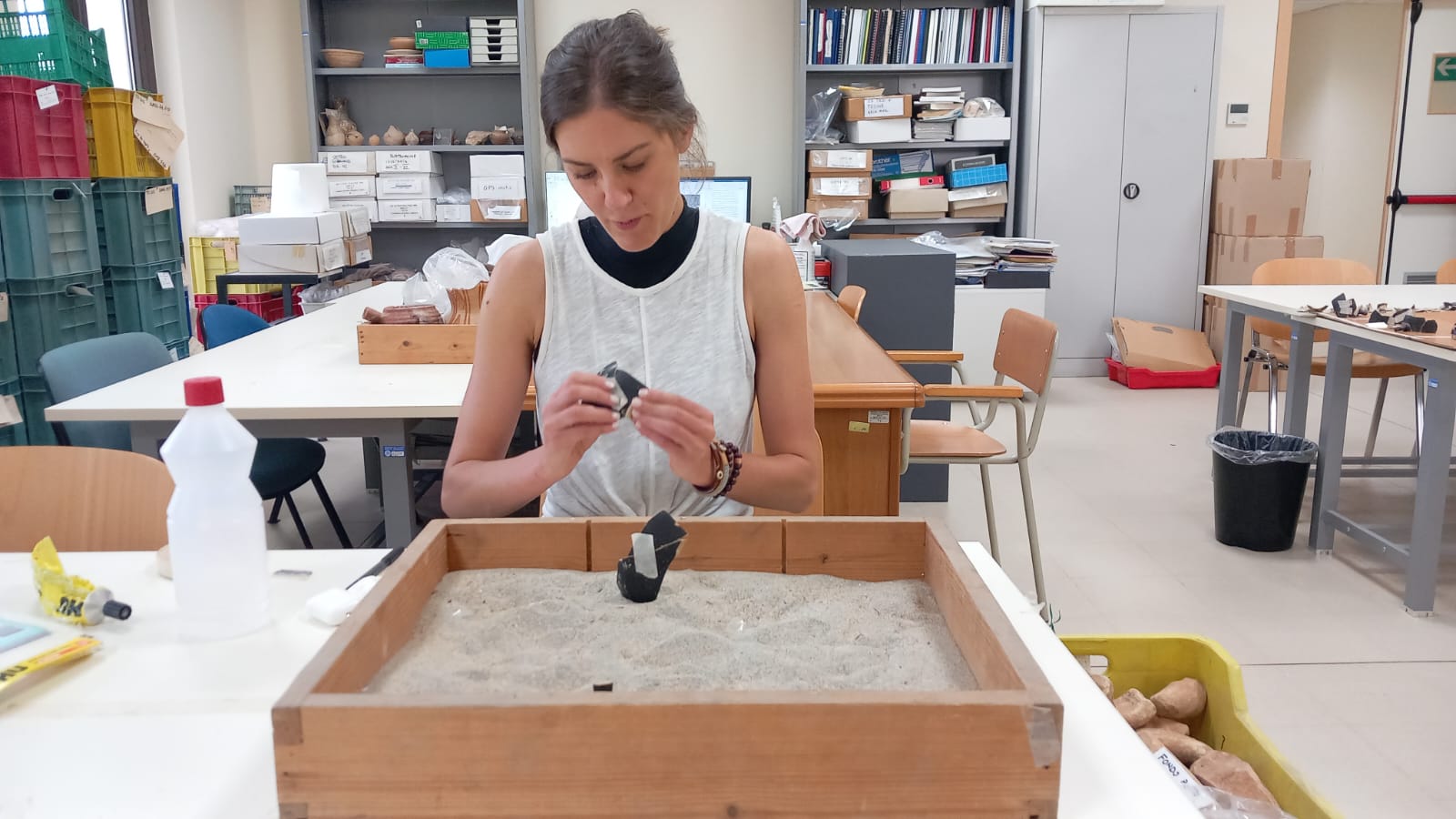Ingrid Cologne (she/her) is an Art History/Archaeology Graduate student at the University of St. Thomas. As a Graduate Student Assistant, she works in supporting the development of a South Italian pottery database with Professor Mark Stansbury O’Donnell. Ingrid’s academic interest is in Early Renaissance Florence, South Italian and Attic Pottery. Her favorite art historical activity is getting down in the dirt to excavate!
Over the summer, Ingrid worked with Dr. Francesca Silvestrelli, an expert in Etruscan, Attic, and South Italian pottery and professor of archaeology at the University of Salento in Lecce, Italy. Onsite in the University’s archaeological laboratory, they processed a large amount of high-quality black-glaze pottery that has been recovered over the last 20 years from the Campo della Fiera site in Orvieto – an extremely significant area that is hypothesized to have been the seat of the Etruscan Fanum Volumnae: the elusive, all-important federal sanctuary where delegates of the 12 Etruscan regions would gather. Rich in material culture, the site was the last to fall to the Romans in the 3rd century BCE.
The project began with sorting thousands of pottery shards based on intensive stylistic analysis – examining each piece based on the quality of its glaze, thickness, rim-style, and diameter – which then allowed the team to categorize the shape the sherd likely came from. From there, the pair worked to identify joins: sherds that fit together to form a single vessel. Once the joins were established, Ingrid was tasked with restoring the pottery and creating archaeological profile drawings to document the vessels found for future research. Once this was completed, she analyzed the clay composition using the Munsell Color System, which involved close examination of the clay fabric to document color and texture, which then give important information on the mineral content and density of the clay that was used. Much of Dr. Silvestrelli’s recent scholarship has focused on kilns used to fire black-glaze pottery; so, she also taught Ingrid how to identify the visual markers that provide clues into the firing process. For example: a well-fired cup presents a luminous, even black gloss on both the inner and outer surface, but fragments with red or brown discolorations indicate problems during the final oxidized phase of firing, and grey fragments demonstrate incorrect temperature control during the second phase. When put together, all of this information provided valuable insight into the context of the massive amount of pottery sherds that were found at this site. A crash course in an archaeological lab, this opportunity provided Ingrid with invaluable hands-on experience that will be crucial to her success and competitiveness in the field after graduation.
- Categorizing and labeling pieces.
- Ingrid sorts through pottery pieces.



